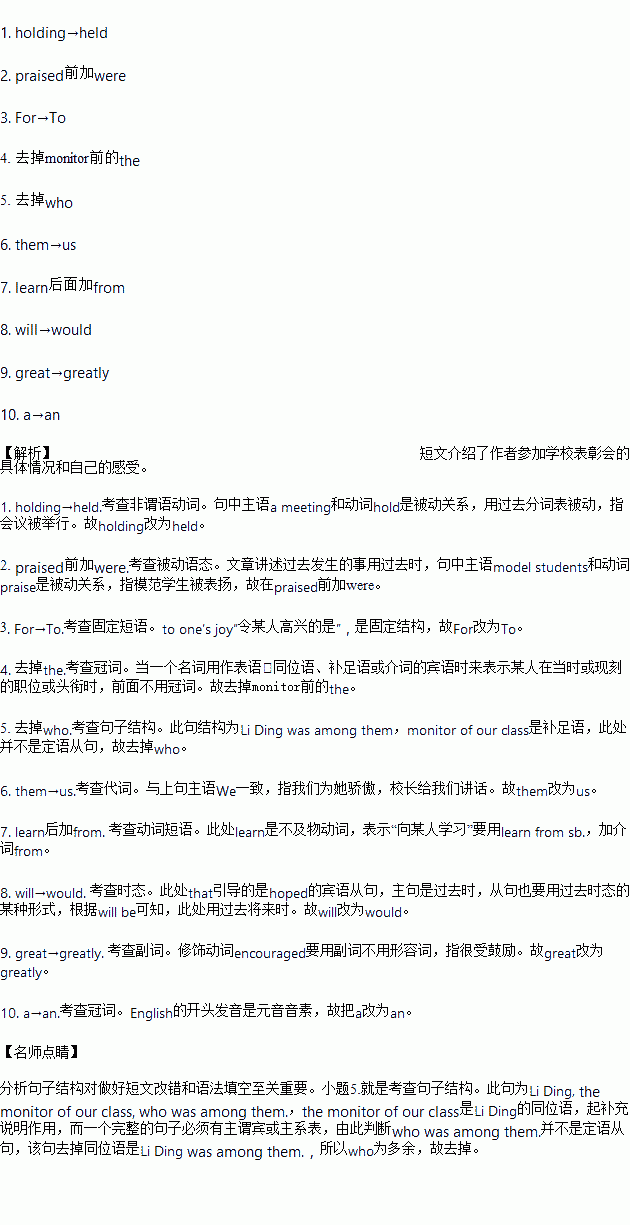题目内容
Today I attended a meeting holding in our school. At the meeting over forty model students praised. For our joy, Li Ding, the monitor of our class, who was among them. We all felt proud of her. Then the headmaster gave them a talk. He wanted us to learn these students and hoped that more and more students will be praised at the next school meeting. I was great encouraged and made up my mind to work harder. Next week there will be a English exam. I’ll try to get good marks.
练习册系列答案
 天天向上一本好卷系列答案
天天向上一本好卷系列答案 小学生10分钟应用题系列答案
小学生10分钟应用题系列答案
相关题目

